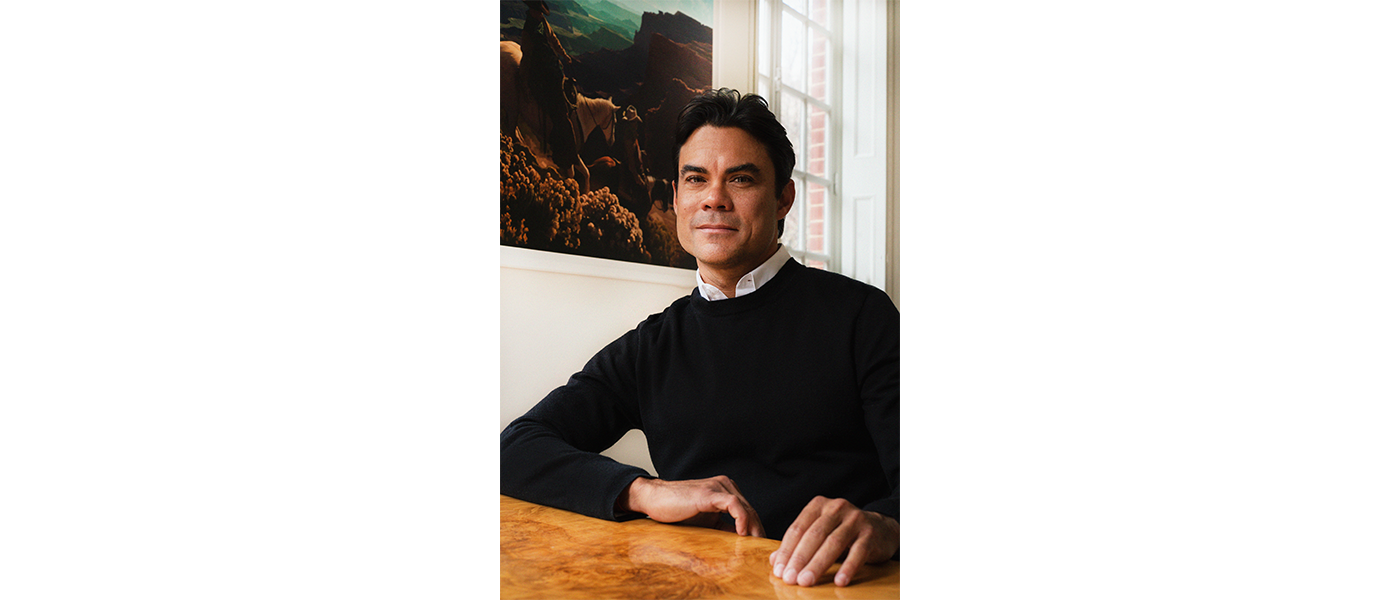There is fertile growth potential in international markets for U.S. brands, especially those venturing into the more than $100 billion makeup and personal care business in China. However, navigating the nuances and regulations of foreign markets can be challenging for domestic companies.
Julian Reis founded SuperOrdinary in 2018 to help U.S. brands enter emerging markets. Although he began his career in finance (and started his first hedge fund at age 27), Julian took a detour into the beauty services industry—first starting an e-commerce beauty business in Singapore before cofounding Skin Laundry in 2014.
Julian, who is of Australian, Chinese, and Portuguese descent, spent a great deal of time in Asia, which helped him understand the demand for a company like SuperOrdinary.
Beyond taking brands across borders, Julian realized SuperOrdinary could ease their journey onto Amazon. The platform has its own ever-evolving ecosystem that even well-established companies often need assistance to manage. Today, Amazon is credited for capturing one-third of all beauty bought online.
SuperOrdinary has grown into a company with more than 600 employees and has facilitated sustainable growth for brands including Drunk Elephant, Malin + Goetz, Joanna Vargas, Biossance, and Olaplex—just to name a few. The company also incubated its own launch called Lula, along with makeup artist Sarah Uslan.
In this 5 minute beauty interview, Julian talks about the differences in marketing in Asia, where his company is heading, and what makes a brand a good partner for SuperOrdinary.
Beauty News: How do you describe SuperOrdinary?
Julian Reis: It is the next generation of a distribution company. Beauty distribution hasn’t really changed in 15 years. We started SuperOrdinary to solve that and open up beauty brands to different and exciting marketplaces. The goal is to really accelerate beauty brands’ growth globally. We are a trusted partner to be your brand manager outside of your home market.
BN: What are some differences to marketing to consumers in Asia versus the U.S.?
JR: In Asia, consumers spend more than 75 percent of their time on different marketplaces rather than primarily going to brick and mortar stores or a brand’s dot com. They are on TikTok, Lazada, Amazon, and Tmall. SuperOrdinary is the backbone to all these marketplaces.
We are bringing brands to these exciting channels. For example, on TikTok, we work with brands so our creators, our influencers and our KOLs [Key Opinion Leaders who have monumental influence on Chinese consumers] can create content and connect directly with consumers. SuperOrdinary can fulfill these orders directly to end consumers. We can operate brands’ marketplaces from Shanghai or China or in Southeast Asia where we have local experts. That has strengthened our services and capabilities because we have employees and colleagues in those local markets.
We have employees located in Shanghai, Thailand and Malaysia—they are local beauty and consumer product experts in these local markets. These brands are more than just translated into the local language. We really think deep and hard about how these brands should be communicated to the local consumers—hashtags, emojis—and right down to which products we should lead with. The world has changed a lot in the past few years; markets that were not available before are opening up.
BN: Can you talk about how you help brands on Amazon?
JR: We work with brands to help them get on Amazon and protect their brands from rogue sellers. We make sure their storefronts look pristine and that the brand is presented in the right manner. Our brand-focused, data-driven approach gives brands the expertise they to own and optimize their presence on Amazon
BN: Can you elaborate on how you work with brands in China? Are there also brick and mortar opportunities?
JR: We do offer brick and mortar distribution in China now, but we do look for brands to get to a certain size before we start bringing them into brick and mortar stores. The offshore market, the brick and mortar market with the domestic market is five times bigger than the cross-border market.
Now animal testing has been as of May 1 [which opens up more opportunities for beauty brands].
We handle the regulatory filing and registration for our brands in China. The brick and mortar market is five times bigger than the cross-border market. It’s a really exciting opportunity for these brands once they hit a certain scale to get them into these local markets in local markets.
BN: What is a benchmark for a brand to be a good candidate for partnering with SuperOrdinary? And what do you look for in a brand to work with?
JR: As a rule of thumb, brands typically should be doing between $50 million to $100 million of sales in their domestic market. Often, they wouldn’t have a proper infrastructure, but they are ready to support a global rollout. It is expensive to create awareness in a country that has a billion-and-a-half people.
We love brands that are passionate, have an understanding for these local markets where they want to grow and are really invested in the long term. Three to five years ago, brands were lucky to catch the wave early and grow; now it takes at least five years to build a brand in any market. These markets sometimes have no information about these brands. It is really important to be patient and build in the right manner—not just saying let’s go into these markets and expect a certain amount of revenue in one year.
BN: What are SuperOrdinary’s three-year goals?
JR: We would love to be in all the countries that are important to us. We are currently in Asia and in the U.S. and we see ourselves expanding to Europe and South America. The plan is also to extend into categories outside of beauty, such as wellness.
We want our brands to focus on creating incredible products, incredible branding, incredible campaigns and for SuperOrdinary to really use our operating leverage to accelerate those brands, especially for hard to get to markets.
These are markets that are growing the fastest—China is almost a $100 billion market and Southeast Asia is $25 billion. Many of the brands we work with are not available in these markets.
BN: Predictions for 2022?
JR: It is going to be a very different year than 2021. The challenges and opportunities will be to build brands outside of the U.S. We hear more brands that traditionally haven’t gone overseas now looking to move to these other markets. Thinking global and acting local is an opportunity.




